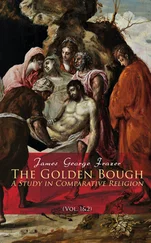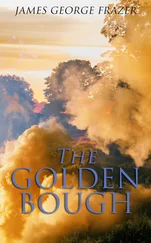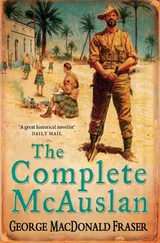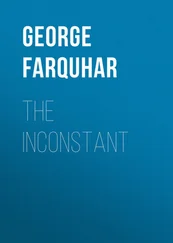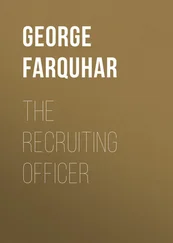George Fraser - The Steel Bonnets
Здесь есть возможность читать онлайн «George Fraser - The Steel Bonnets» — ознакомительный отрывок электронной книги совершенно бесплатно, а после прочтения отрывка купить полную версию. В некоторых случаях можно слушать аудио, скачать через торрент в формате fb2 и присутствует краткое содержание. Жанр: unrecognised, на английском языке. Описание произведения, (предисловие) а так же отзывы посетителей доступны на портале библиотеки ЛибКат.
- Название:The Steel Bonnets
- Автор:
- Жанр:
- Год:неизвестен
- ISBN:нет данных
- Рейтинг книги:4 / 5. Голосов: 1
-
Избранное:Добавить в избранное
- Отзывы:
-
Ваша оценка:
- 80
- 1
- 2
- 3
- 4
- 5
The Steel Bonnets: краткое содержание, описание и аннотация
Предлагаем к чтению аннотацию, описание, краткое содержание или предисловие (зависит от того, что написал сам автор книги «The Steel Bonnets»). Если вы не нашли необходимую информацию о книге — напишите в комментариях, мы постараемся отыскать её.
The Steel Bonnets — читать онлайн ознакомительный отрывок
Ниже представлен текст книги, разбитый по страницам. Система сохранения места последней прочитанной страницы, позволяет с удобством читать онлайн бесплатно книгу «The Steel Bonnets», без необходимости каждый раз заново искать на чём Вы остановились. Поставьте закладку, и сможете в любой момент перейти на страницу, на которой закончили чтение.
Интервал:
Закладка:
Of those closing months, the worst period was from Michaelmas (September 29) to Martinmas (November 11): “then are the fells good and drie and cattle strong to dryve”. The dead of winter was comparatively less troublesome, because of foul weather and the weaker state of the cattle. This weakness had reached a peak by Candlemas (February 2), when with the nights growing shorter and oats dearer, the reivers’ horses were less well fed and ready to be put to grass.
Thus Robert Carey, waxing technical on an admittedly technical subject: he even noticed that the thieves “will never lightly steal hard before Lammas (August 1), for fear of the assizes, but beeing once past, they returne to their former trade”. In fact it was probably not the assizes, but the removal of the cattle to the high sheilings during the summer that restrained the robbers. But his observations show up some of the finer points of reiving, although judging by Border records the pattern of raiding was spread more generally over the year than his findings suggest.
As to any geographical pattern of raids, it is difficult to say more than that the general trend from Scotland was south-eastwards, the Western end of the frontier containing by far the most troublesome elements, while from England the Middle March raiders forayed in all directions. Edward Aglionby’s report to Burghley of 1592 is quite definite that the English West and Middle Marches suffered most from Liddesdale, but that Teviotdale “doth never offend the West Border”. Lord Willoughby, at Berwick, was equally positive that all the spoils in the English East March were committed over the Tweed fords.
But it is dangerous to take these generalisations too much for granted, just as it is unwise to emphasise too strongly the importance of the so-called “reivers’ roads” which cross the Border at various points. It is tempting for a geographer to pick on well-defined paths and passages, and suggest that these were used habitually by the rustlers. The last thing a Border reiver wanted was to follow a known route, especially on the way home. There were, by contemporary calculation, more than forty passages into the English Middle March, 1 but unless the Border character has changed considerably, they were probably often ignored in favour of going “over the tops”. Men who know their business can take cattle over some unpromising country.
One thing is sure: the ground most often crossed by raiders was the Bewcastle Waste, a wild area of fell and moor lying south-east of Liddesdale on the English side. It was the very hub of the Middle and West Marches, and there is ample documentary confirmation of Lord Dacre’s assertion in 1528, that “theye come thorow Bewcastelldale, and retirnes, for the moste parte, the same waye agayne”.
But not invariably, according to Thomas Musgrave fifty years later. Writing to Burghley, he described two Liddesdale routes quite specifically; one, directed at the Coquet Valley, skirted Bewcastle to the east and ran “by the Perlfell without the Horse Head near Kelder, and so along abone Chepechase”. The second, to Tyne Water, was by Kershopehead, skirting Gele Crage, and by Tarnbek, Bogells Gar, Spye Crag, and Lampert. Musgrave was an expert frontiersman, and his information can be relied on. But these were routes which would be fashionable for a time—as in the Elliot – Fenwick feud; for the most part, the reivers were liable to ride anywhere, at any time, in any numbers.
To understand how good their scouting and woodcraft was, we should see what they were up against, quite apart from the dark, the weather, and the rough country. On the English side the most expert of all Wardens, Lord Wharton, had established a formidable guard system in the 1550s, whereby the entire frontier, from Solway to Berwick, was under watch night and day, from October to mid-March; local gentlemen were made responsible for arming and horsing their people, and setting and inspecting the watches, which were posted on hilltops, fords, valleys, and every conceivable passage over the Marches. Wharton, a hard man who believed in hanging first and asking questions later, reinforced his system with harsh penalties for neglect of duty; it was death not to resist raiders, 2 all intercourse with Scots was forbidden, and gentlemen were under the strictest instructions to see his rules enforced. He knew his Borderers, and was determined to stamp out any fifth column activities on the raiders’ behalf.
Nor could the reivers count on watches always being in the same place; small mobile patrols were also used, and “plump” watches of unusual strength were liable to be set up as occasion demanded.
To man the frontier efficiently, about 1000 watchers were necessary; it follows that in spite of the regulations, there was some defaulting. Young Scrope found difficulty in maintaining plump watches of forty horse in the West, and at Morpeth in the winter of 1597 there was a flat refusal to stand watches, so that a plump watch had to be moved in. Possibly owing to shortage of men, day watches seem to have been indifferently kept in young Scrope’s time.
Watches on the Scottish side seem to have been less organised, which may be significant, but here as in England there was a system of beacons on hilltops and the roofs of towers to give the alarm. Owners of towers were obliged to light their beacons on learning of any fray by night; the penalty for failure was a 3s 4d fine. In Liddesdale the approach of a raid in daylight was signalled by spreading a white sheet over a prominent bush on a hillside or crest, this being repeated all along the valley.
England had another line of defence, in the establishment of numbers of “slewdogges” 3 for the tracking down of raiders; money was raised for their maintenance, and from the number of them stolen in raids it is obvious that they were highly prized. They could be worth as much as £ 10.
So, even allowing for those watchers who were in league with the reivers, or were too terrified to give them away, the business of raiding was fraught with hazards. From the moment the March limits were crossed, the marauders were riding in the shadow of the gallows; if some of their exploits were undoubtedly mean and cruel, they can hardly be called cowardly. Even when they were riding into a frightened countryside (which was often the case in the last decades of Elizabeth’s reign), and were sufficiently expert to avoid or evade the guards, tracker dogs, and mobile patrols, to lift their plunder and shake off pursuit, there were some dangers which could not be anticipated. No band could ever be sure that they were the only ones out on the fells at night; half a dozen raids might cross each others’ tracks in the dark, and although hi-jacking was not common, it did happen at least once, to an Elliot party who made a quick dawn foray into Bewcastle only to be jumped by a returning band of English night raiders, who lifted the Scots’ booty of eighty head.
1.The names attached to some of the Middle March riders’ passages are highly evocative: Murders Rack, Hell Cauldron, Keilder Edge, Thrust Pick, etc.
2.The penalty was eventually relaxed, and after 1570 watchers in the English West and Middle Marches who failed to raise a hue and cry against thieves were only held liable for goods stolen.
3.Also given as sloughdogs and sleuthdogs. Scott traces the name from the sloughs and mosses through which they followed the scent, but it seems more likely that it came from sleuth, meaning a track or trail. Trail hounds are common in Cumberland today, where they are used for long-distance racing. They travel at surprising speeds after scent, and it seems possible that the sleuthdogs of the sixteenth century were of this breed, rather than bloodhounds.
XIII
Nothing too hot or too heavy
Интервал:
Закладка:
Похожие книги на «The Steel Bonnets»
Представляем Вашему вниманию похожие книги на «The Steel Bonnets» списком для выбора. Мы отобрали схожую по названию и смыслу литературу в надежде предоставить читателям больше вариантов отыскать новые, интересные, ещё непрочитанные произведения.
Обсуждение, отзывы о книге «The Steel Bonnets» и просто собственные мнения читателей. Оставьте ваши комментарии, напишите, что Вы думаете о произведении, его смысле или главных героях. Укажите что конкретно понравилось, а что нет, и почему Вы так считаете.

